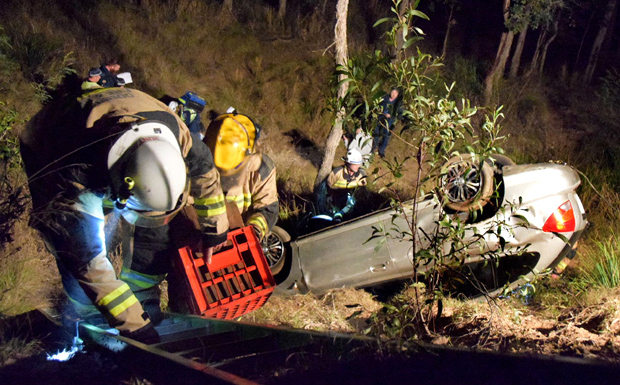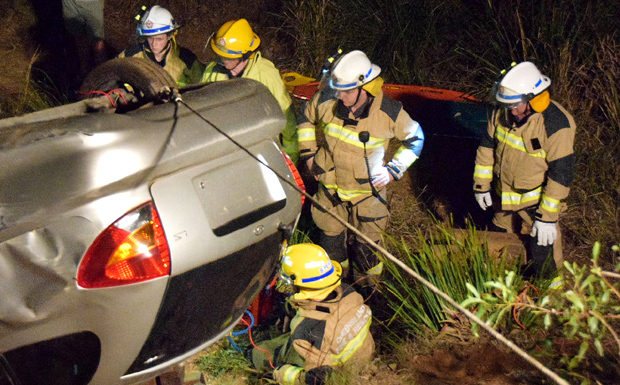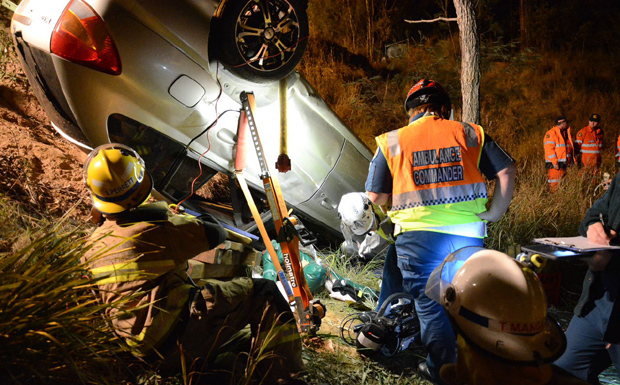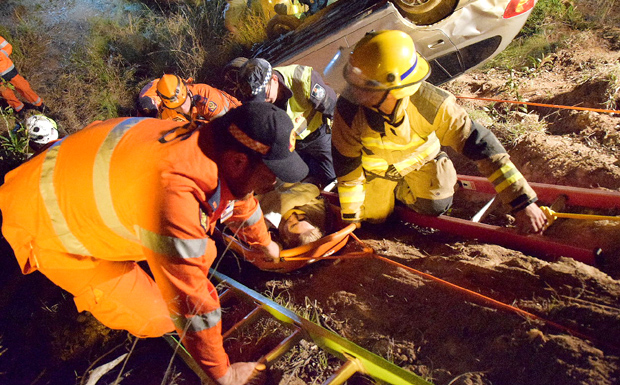
September 13, 2016
Nanango ambulance officers, police, fire brigade and SES personnel scrambled last Monday night for a dramatic rescue at an isolated location off the Nanango-Tarong Road.
A car had gone over the edge and crashed upside-down in a deep ravine.
One passenger, who had been thrown clear of the vehicle, was in nearby bushland and obviously in pain.
And the driver – unconscious – was still trapped inside the vehicle.
All four services quickly clicked into action.
Police and SES crews isolated the site while firies checked to ensure the vehicle wouldn’t explode as ambos set about rescuing the luckless occupants.
Within a short time the driver was freed, and was stretchered up the side of the ravine on ladders to join the passenger, who had already been moved to the waiting ambulance to receive first aid.
Both victims where then whisked off the Nanango Hospital for assessment and further treatment.
Fortunately for everyone involved, the crash was fake.
The injured passenger turned out to be a member of the Nanango Local Ambulance Committee who had volunteered to play the part, and the car’s driver was a life-size dummy.
But the exercise provided invaluable training for Nanango’s first responders, who agreed they had learned a lot from the experience.
The accident simulation had been arranged by Nanango Ambulance’s officer-in-charge Colleen Ramsay, who spent several months putting it together with the town’s other first responder groups.
And the crashed car and location had been provided by Josh Mangan and the Nanango firies, who found a site isolated enough not to disrupt traffic or worry nearby residents.
All participants in the exercise were off duty that night, and had volunteered to take part.
Their actions during the exercise were scrutinised by senior ambulance service personnel, who provided tips and advice about how the participants might improve if they encounter a similar situation in future.
It was the second time such a simulation has been run in Nanango for new and experienced first responders, and the groups hope to run similar exercises once a year in the future.
“In real life you don’t want to make mistakes,” an ambulance spokesperson said.
“Exercises like this help us prepare to do our best when we need to.”
[Photos: Clive Lowe Photography]



























